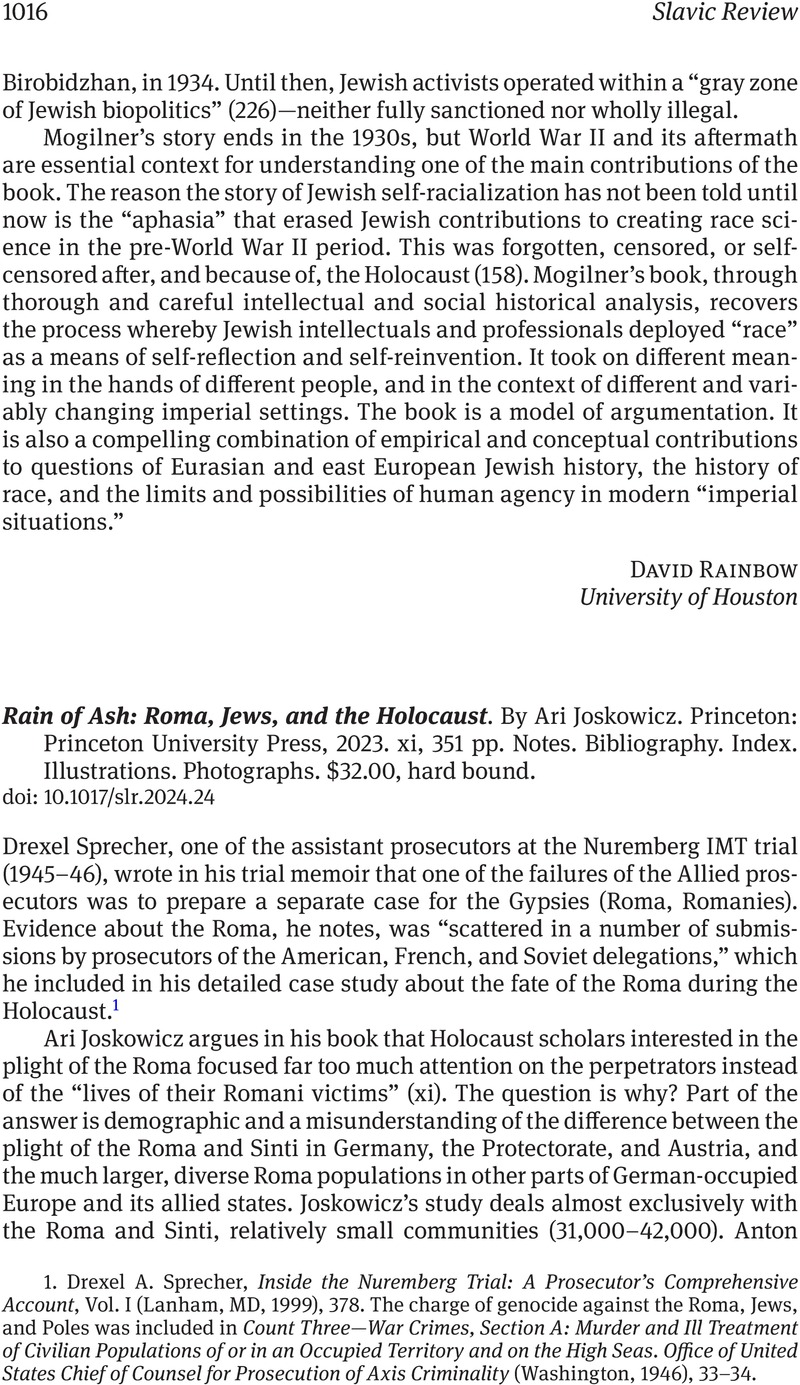No CrossRef data available.
Article contents
Rain of Ash: Roma, Jews, and the Holocaust. By Ari Joskowicz. Princeton: Princeton University Press, 2023. xi, 351 pp. Notes. Bibliography. Index. Illustrations. Photographs. $32.00, hard bound.
Review products
Published online by Cambridge University Press: 18 April 2024
Abstract

- Type
- Featured Reviews
- Information
- Copyright
- Copyright © The Author(s), 2024. Published by Cambridge University Press on behalf of Association for Slavic, East European, and Eurasian Studies
References
1. Sprecher, Drexel A., Inside the Nuremberg Trial: A Prosecutor's Comprehensive Account, Vol. I (Lanham, MD, 1999), 378Google Scholar. The charge of genocide against the Roma, Jews, and Poles was included in Count Three—War Crimes, Section A: Murder and Ill Treatment of Civilian Populations of or in an Occupied Territory and on the High Seas. Office of United States Chief of Counsel for Prosecution of Axis Criminality (Washington, 1946), 33–34.
2. Anton Weiss-Wendt, “The Number of Romani Deaths during the Nazi Era Revisited” (unpublished paper delivered at the ASEEES Conference, November 12, 2022), 31; David M. Crowe, The Holocaust: Roots, History, and Aftermath, 2nd ed. (New York, 2022), Appendix B, 479.
3. The Trial of Adolf Eichmann: Record of Proceedings, Vols. 1–5 (Jerusalem, 1992), 1239–40,1244, 1257–64, 1288; Francisek Piper, Auschwitz, 1940–1945, Vol. III: Mass Murder (Osweicim, 2000), 223–24; Gideon Hausner, Justice in Jerusalem (New York, 1968), 59, 66, 129, 301, 397, 424.


